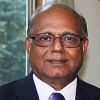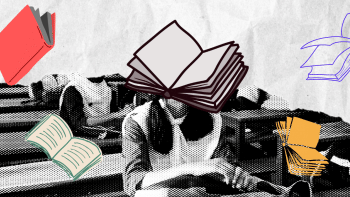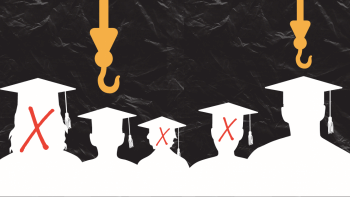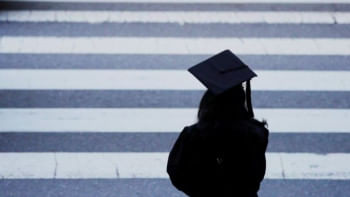SSC Exam Results: What do the numbers mean?

More than two million children – girls slightly outnumbering boys – sat for the Secondary School Certificate (SSC) examination this year. Results were published on July 28, which showed an average pass rate of 80.39 percent for the nine general education boards and the equivalent one technical and one madrasa education board. Almost nine percent of the examinees obtained the top score of grade point average (GPA) 5 – again, girls surpassed boys. This is reason enough for the satisfaction of the education authorities.
The SSC exam at the end of 10 years of schooling is a milestone in children's education journey and a cause for much anxiety for both children and their parents. The result has a large influence on further education and occupational courses for the child. Given its importance, what the numbers related to the results, collectively for society and personally for each child, mean is a legitimate question. The answer is not all that clear.
Those who have earned the top score of GPA 5 are happy and deserve to be congratulated. However, despite their good performance, all may not be able to enrol in preferred institutions or subjects at the tertiary stage of education. The combined performance at SSC and the next level of higher secondary certificate (HSC) examinations earn them only a ticket to sit for the admission test for institutions and subjects of their choice. The concerned education authorities, public or private, apparently do not have enough confidence in the SSC and HSC results to rely on these when selecting their students.
Moreover, to what extent do the top scorers' performance represent the performance of their schools and teachers? Private tutoring and coaching, even at expensive private schools, have become the norm. Time, effort, and money have to be spent by the students' parents to help prepare their children for the milestone public exams. Students and their parents are largely on their own in ensuring a fair start in life for the former. The large majority, whose families cannot muster the resources or are not capable of guiding and helping their children themselves, does not have that fair chance in life – an injustice to the children and a loss to the nation as a whole.
It is the plight of the 90-plus percent of the students not obtaining the coveted high scores – their educational opportunities and their life chances – that is the true measure of performance in the school system. Public exams such as SSC and HSC can be an important measure of student learning when they meet two criteria: validity and reliability of the measurement. Without going into technicalities, the validity of a test is about whether the content and items of questions in the test represent the knowledge and skills learners are expected to acquire and whether the tests actually measure students' level of those skills and knowledge. Reliability refers to getting the same results when the tests are repeated. On both counts, the public exams are suspect and public perception about the results reflects that doubt. Not relying on the results in deciding admission of students to institutions at the next level of education and the great variation of aggregate results across education boards and across years raise these doubts.
In 2021, at the waning phase of the Covid-19 pandemic, the SSC exam was held on a shortened syllabus for elective subjects only, inexplicably leaving out the core subjects of Bangla, English, and Math. The pass rate jumped to 93.58 percent. Tests on a shortened syllabus in 2022 also showed a high aggregate pass rate of 87.44 percent. Poor scores in English and Math have been mentioned by the education minister as reasons behind the low performance this year, even though the syllabus was again truncated for the tests. There were not enough school days to teach the total lesson content after the post-Covid resumption of classes.
The test results varied in part based on what was decided to be tested from year to year – a challenge to validity of tests. The range of scores for the different boards varied substantially. This year, for example, among the nine general education boards, the average pass rate for Barishal is 90.18 percent, compared to 76.06 percent for Sylhet. Is it plausible that such a large difference in results is caused by a wide gap in the quality of instruction and performance of schools between the two divisions? There seems to be no good explanation except for a probable test reliability issue. Maintaining validity and reliability of large-scale tests are always a challenge, and call for continuing research and analysis of tests and modifying them accordingly by competent specialists.
Education commentators John Richards and Shahidul Islam cited a recent report of The Economist magazine, which outlined how India was doing a terrible job of ensuring that youngsters who thronged its classrooms pick up essential skills, and that much of this critique applied to other South Asian countries including Bangladesh. In The Daily Star, the two commentators wrote, "…we need an independent research initiative [in Bangladesh]… for the evaluation of students' learning and the system's performance."
When a foundation is not built of basic skills of reading and counting at the primary level for most students, the effect of this lingers. As part of Education Watch Report 2022, an assessment of students' learning performance was undertaken by administering a 90-minute test each on Bangla, English, and Math, with a sample of Class 8 and Class 9 students. The tests were prepared based on the Class 8 syllabus, deliberately pitching the items at a "middle level" of difficulty. The overall result showed that 36 percent of Class 8 students and 33.5 percent of Class 9 students obtained very low scores of below 40 percent. The scores for the two classes on tests based on the Class 8 syllabus suggest that there is a cumulative adverse effect on student learning, most likely due to the pandemic-induced school closure.
It would be reasonable to assume, given the moderate level
of difficulty of the test, that most of the students (80 percent or more) should obtain letter-grade scores equivalent to GPA 3 to 5. The reality was that over two-thirds did not meet this expectation. Moreover, how reasonable is the practice of accepting a 33 percent score as a passing grade? This suggests that a student is regarded as performing adequately at grade level even if she/he has yet to learn two-thirds of the content of a subject specified for the grade.
A detailed analysis of the SSC results is likely to show a similar pattern of student performance as was found in the Education Watch study. Is this level of learning outcome from our schools acceptable? It is relevant to ask how the introduction of the ambitious new school curriculum will work unless the various obstacles to grade level performance of students are recognised and addressed.
Dr Manzoor Ahmed is professor emeritus at Brac University, chair of Bangladesh ECD Network and vice-chair of Campaign for Popular Education (CAMPE). The views expressed in the article are his own.


 For all latest news, follow The Daily Star's Google News channel.
For all latest news, follow The Daily Star's Google News channel. 













Comments